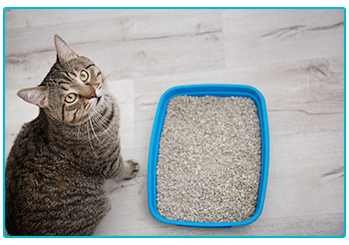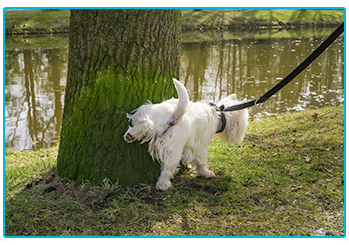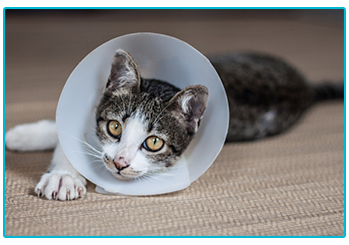For pet owners, it can be difficult seeing your furry friend become ill, in pain and discomfort. This can sometimes be the case with lower urinary tract obstruction, a life-threatening problem that can affect both cats and dogs. We’ve spoken to our pet health expert about urinary obstructions in pets, the symptoms, and what to do if your dog or cat is suffering.

What is urinary obstruction?
Lower urinary tract obstruction, or urethral obstruction, occurs most commonly in male cats and dogs, as they have a longer, narrower urethra than females. There can be various reasons for obstruction, such as a build-up of urinary crystals, protein and cell debris which could cause a blockage. There might also be urinary tract stones, or a spasm of the urethra. Whatever the cause, urinary obstructions can be fatal for your pet.
Symptoms
There are several different symptoms you might notice in your four-legged friend, ranging from mild to severe. The first sign you’re likely to notice is your pet straining to urinate. Cats may be going to the litter tray more often, and both cats and dogs might be hunching over in pain when trying to urinate. You might also see signs of distress and pain, vocalisation, lack of appetite, and spots of blood when trying to urinate.

What to do
If you think your pet is unable to urinate, contact your vet immediately, even if it is out of hours,* as urinary obstruction can be fatal. Your vet will perform a full examination of your pet. Tests could include urinalysis, blood tests, x-rays and an ultrasound scan. If your cat or dog is suffering from a blockage, they’ll need to be hospitalised for treatment.
Treatment
Once a blockage is found, a urinary obstruction should be removed immediately. Normally, patients require an anaesthetic to pass a catheter in order to remove the blockage. In some cases further surgery can be required, such as a cystotomy or urethrostomy. Medical treatment and supportive care will also be needed.

Next steps
The cause of the obstruction should be identified where possible, which should allow you to take steps to prevent the problem from happening again. This will also aid long-term management. Your pet may be given a prescription diet^ to help prevent the development of urinary crystals and stones. It’s also recommended to increase your pet’s water intake by providing access to plenty of fresh water in a variety of different bowls and locations. Water fountains and wet food can both help to increase your pet’s water intake.
If left untreated, urinary obstructions can be fatal for your dog or cat. If you notice any of the symptoms of obstructions in your pet, you should contact your vet immediately, even out of hours,* to ensure they get the right treatment. Ensure you take your vet’s advice regarding any prescriptions or changes in your pet’s diet, as long-term management can help to prevent the problem from reoccurring.
* The Insurance Emporium will contribute up to £90 for house calls/out of hours calls if your vet confirms that your pet was suffering from a life-endangering injury, illness or condition.
^ The Insurance Emporium will contribute 30p per cat and 60p per dog (up to the limit shown in your policy schedule) to assist towards the cost difference between your pet’s normal diet and any special diet prescribed by, and only available from, your vet as part of the treatment to dissolve bladder stones or crystals in urine up to a maximum of £100 per condition.
All content provided on this blog is for informational purposes only. We make no representations as to the accuracy or completeness of any information on this site or found by following any link on this site. We will not be liable for any errors or omissions in this information nor for the availability of this information. We will not be liable for any loss, injury or damage arising from the display or use of this information. This policy is subject to change at any time.


